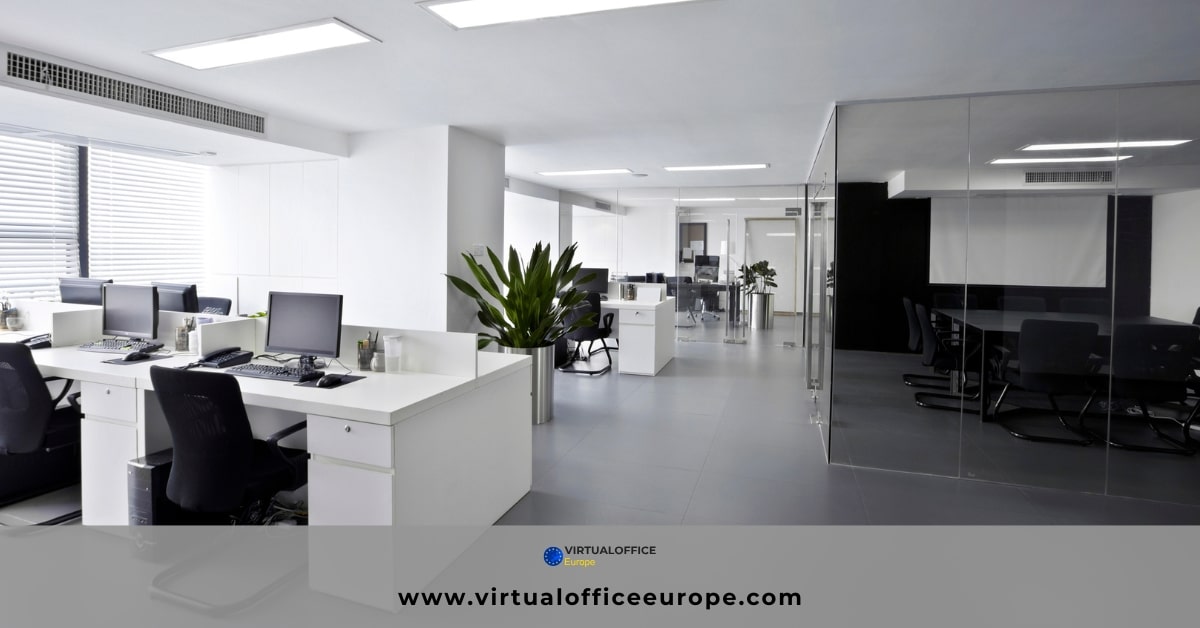In the competitive landscape of business operations across Europe, the choice between virtual office costs and traditional office space carries significant financial implications.This analysis delves into the cost dynamics associated with each option, focusing on the affordability and practicality in today’s economic landscape.
A virtual office setup provides businesses with the flexibility to operate without the need for a physical office space. Instead, it offers essential services remotely, typically including a business address, mail handling, phone services, and occasional access to physical meeting spaces. This option is favored for its cost-effectiveness and adaptability, catering well to startups, freelancers, and established firms seeking to minimize overheads.
The Biggest Benefit of Virtual Offices
Virtual offices provide businesses with the flexibility to operate without the need for physical office space. This option is highly valued for its cost-effectiveness and adaptability, making it an attractive choice for startups, freelancers, and established firms looking to optimize operational efficiency.
Detailed Analysis of Virtual Office Costs
Virtual office setups typically include services such as a prestigious business address, efficient mail handling, professional phone services, access to meeting spaces, and additional support services. These offerings help businesses minimize overhead costs associated with traditional office setups.
Traditional office spaces in major European cities like London, Paris, and Berlin involve significant expenses such as lease payments, utilities, maintenance, and staffing. Understanding these costs is essential for making informed decisions about office space investments.
Choosing the Right Office Solution
While traditional offices offer a dedicated physical environment, virtual offices provide flexibility and cost savings. Whether you’re a startup establishing credibility or a multinational aiming for operational efficiency, evaluating the financial implications of your office setup is key to long-term success in the competitive European market.
Traditional Office Space Costs in European Context
In contrast, traditional office spaces necessitate leasing or owning physical premises, which involves substantial financial commitments influenced by location-specific rental rates and operational expenses. Major European cities such as London, Paris, and Berlin illustrate the varied cost structures that significantly impact overall business budgets.
Cost Considerations for Traditional Office Spaces
Major European cities such as London, Paris, and Berlin illustrate varied cost structures that significantly impact overall business budgets. Here are the key cost considerations:
Lease/Rental Expenses
Lease or rental payments for office space vary based on size, location within the city, and market demand. Prime locations in city centers command higher rental prices compared to suburban or less central areas.
Utilities and Maintenance
Additional costs include electricity, water, heating, and ongoing maintenance to ensure operational efficiency and workplace comfort. These expenses can fluctuate based on energy consumption and maintenance needs.
Furniture and Equipment
Initial investments are needed for office furnishings, computers, and necessary equipment. Ongoing expenses may arise for upgrades, replacements, and repairs to maintain a functional workspace.
Staffing Requirements
Depending on office size, additional personnel may be necessary for cleaning, maintenance, security, and administrative support. Staffing costs contribute significantly to the overall expenses of traditional office setups.
Transportation Costs
Commuting expenses for employees, especially in city-center locations with high traffic and limited parking options, add to operational costs. Transportation costs are a notable consideration for businesses in choosing office locations.
Comparative Cost Analysis: Virtual Office vs. Traditional Office
When evaluating costs, virtual offices often emerge as a more cost-effective solution, especially beneficial for businesses aiming to optimize financial resources and support remote work arrangements. The advantages include:
Lower Overhead Costs:
Virtual offices eliminate or reduce expenses related to lease payments, utilities, and maintenance, translating into substantial savings.
Flexibility in Contracts:
Many virtual office providers offer flexible agreements without long-term commitments, allowing businesses to scale operations according to evolving needs and market conditions.
Virtual Office Costs Enhancing Productivity and Workforce Diversity
Remote work options minimize employee transportation costs, fostering financial efficiency and potentially enhancing productivity.
Moreover, Virtual offices expand access to a broader talent pool beyond geographical limitations, potentially lowering recruitment expenses and enriching workforce diversity.
Scalability
Virtual offices provide scalable solutions that adapt to business growth or seasonal fluctuations without the constraints of physical space limitations.
Virtual Office Costs vs. Traditional Office Cost: Average Prices
For instance, leasing a traditional office in prime locations such as London’s financial district can incur rental costs of €60 per square meter per month, excluding additional expenses like utilities and maintenance. In contrast, virtual office solutions typically start from approximately €100 per month, encompassing essential services such as a prestigious business address, mail handling, and access to meeting spaces. This stark contrast underscores the significant cost savings potential for businesses opting for virtual office setups, particularly beneficial for startups and SMEs aiming to optimize financial resources and operational efficiency.
Virtual Office Costs: A Superior Choice Over Traditional Office Spaces for Startups
While traditional office spaces offer a dedicated physical environment, the cost-effectiveness and operational flexibility of virtual offices make them increasingly appealing to businesses across Europe. Whether launching a startup or optimizing operations as a multinational enterprise, understanding the financial implications of office space decisions is pivotal. Virtual offices not only mitigate overhead costs but also empower businesses to navigate market dynamics and leverage opportunities with agility. By assessing specific business needs and financial considerations, organizations can make informed decisions that foster sustainable growth and competitive advantage in today’s dynamic business landscape.








